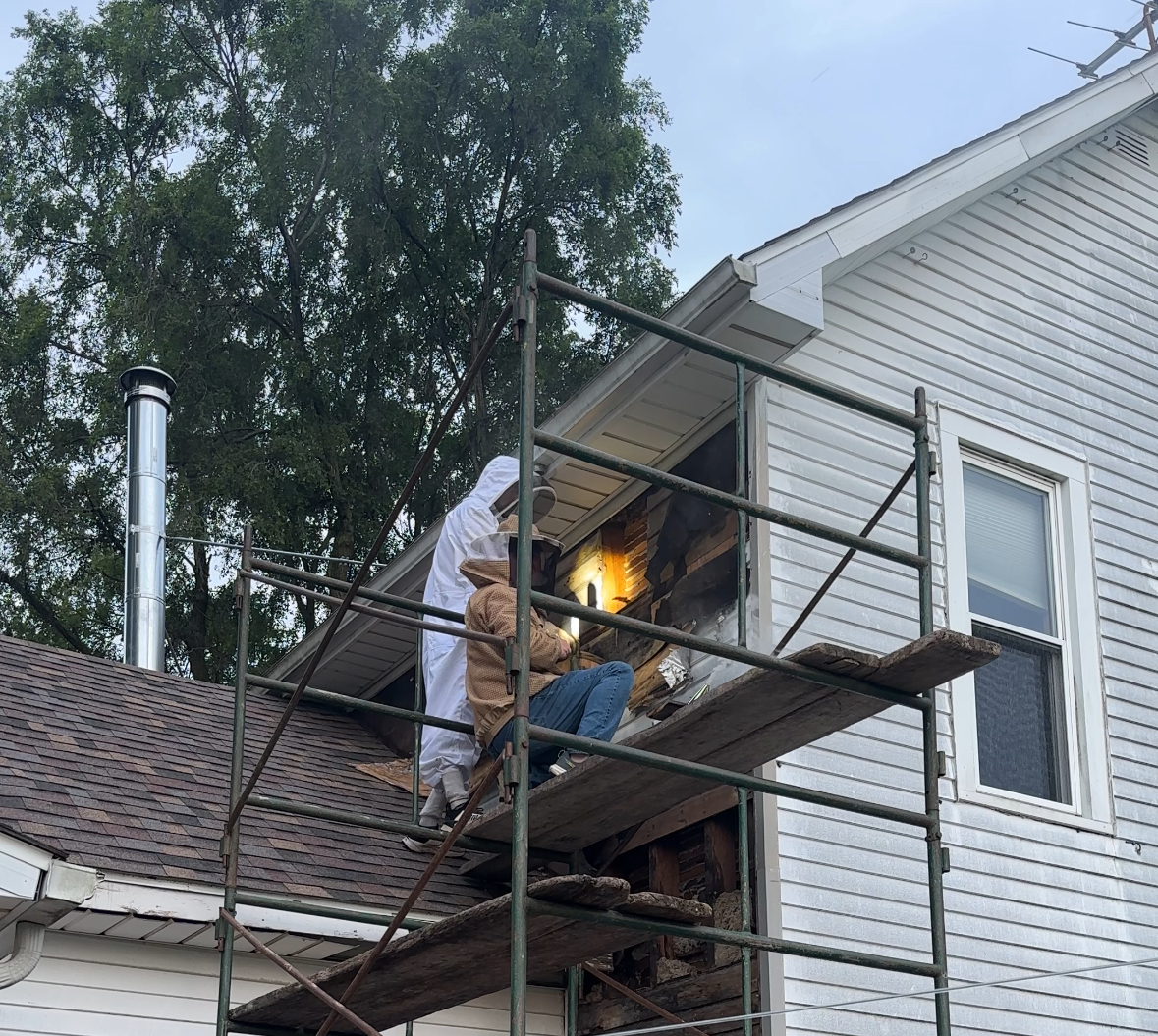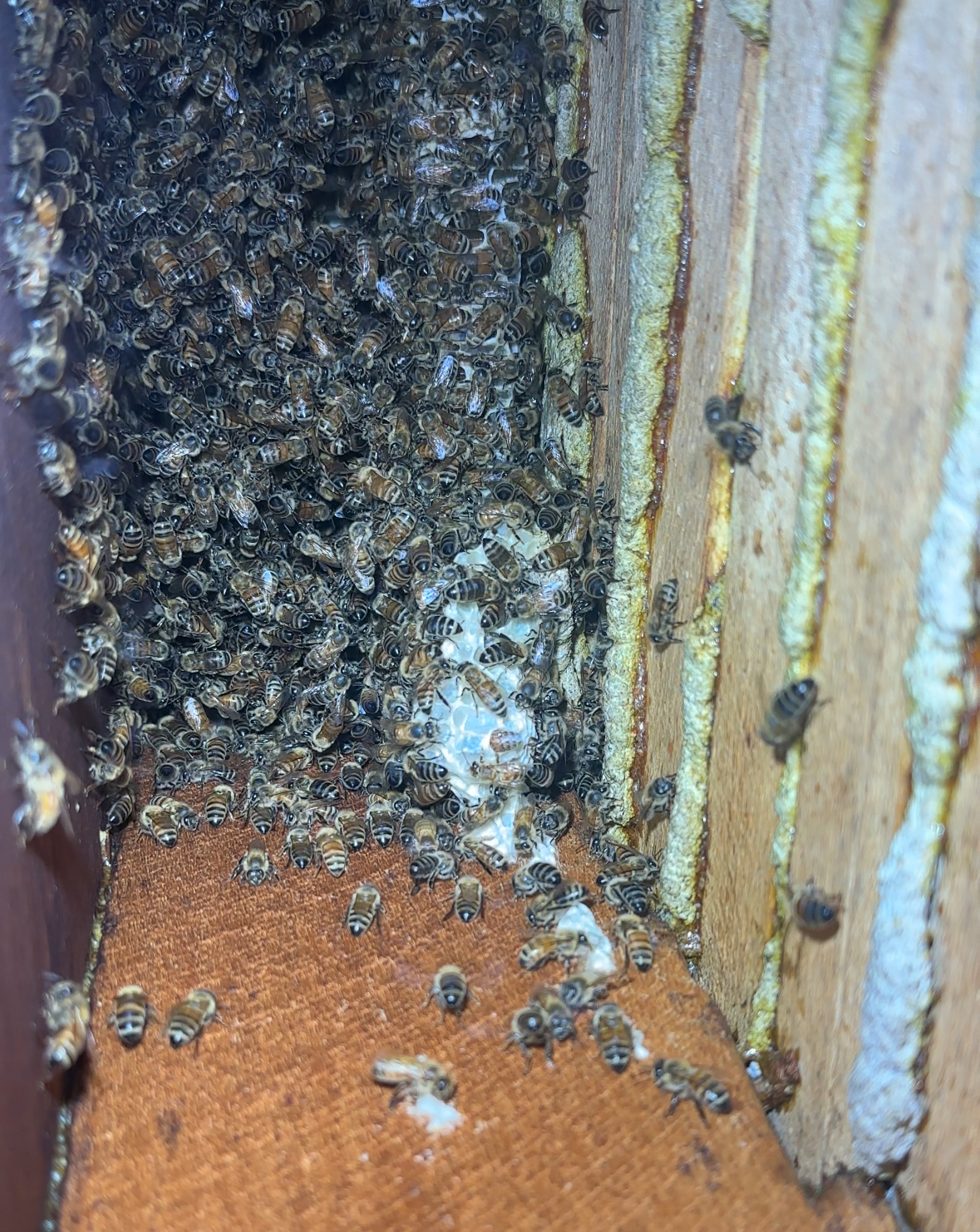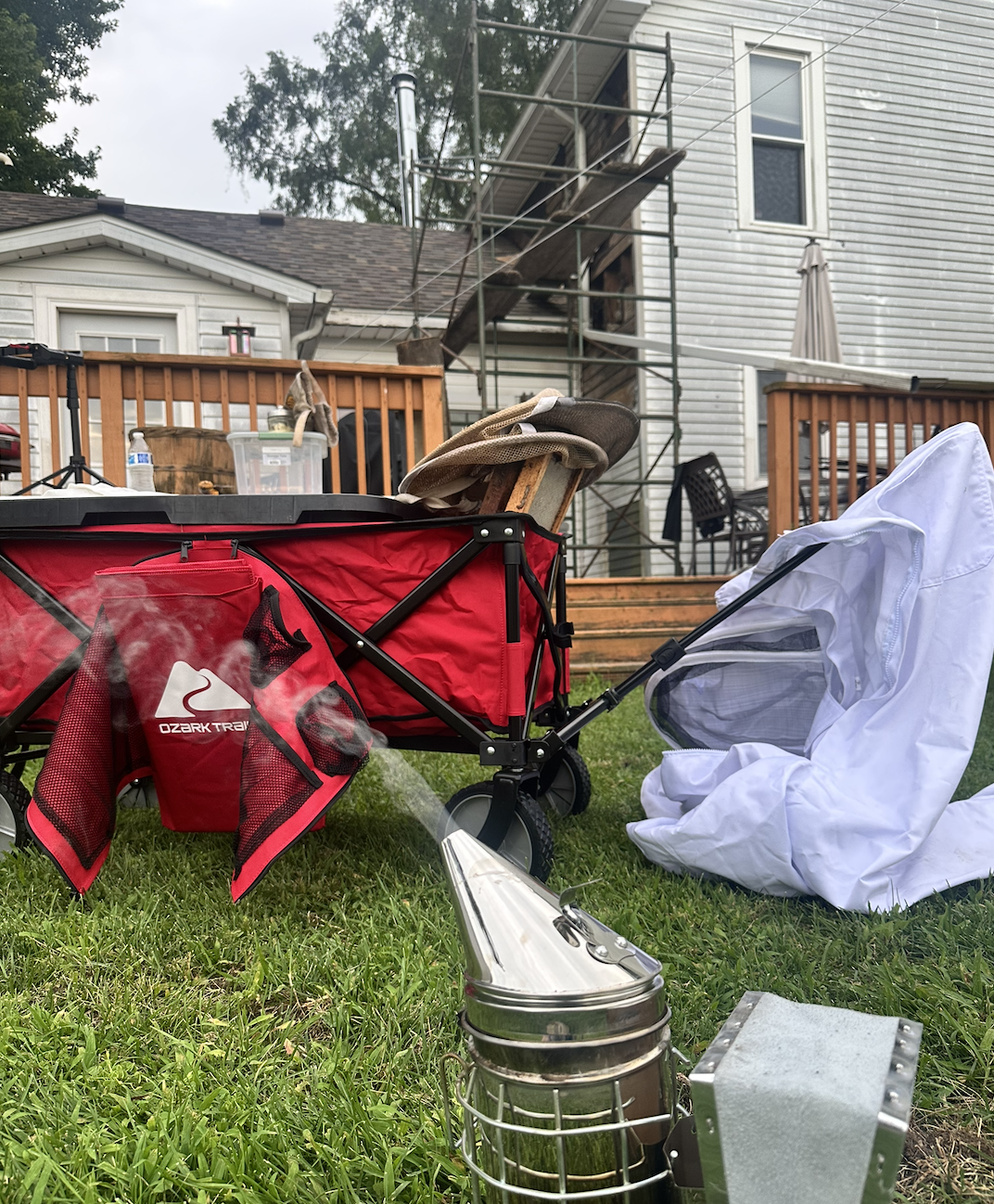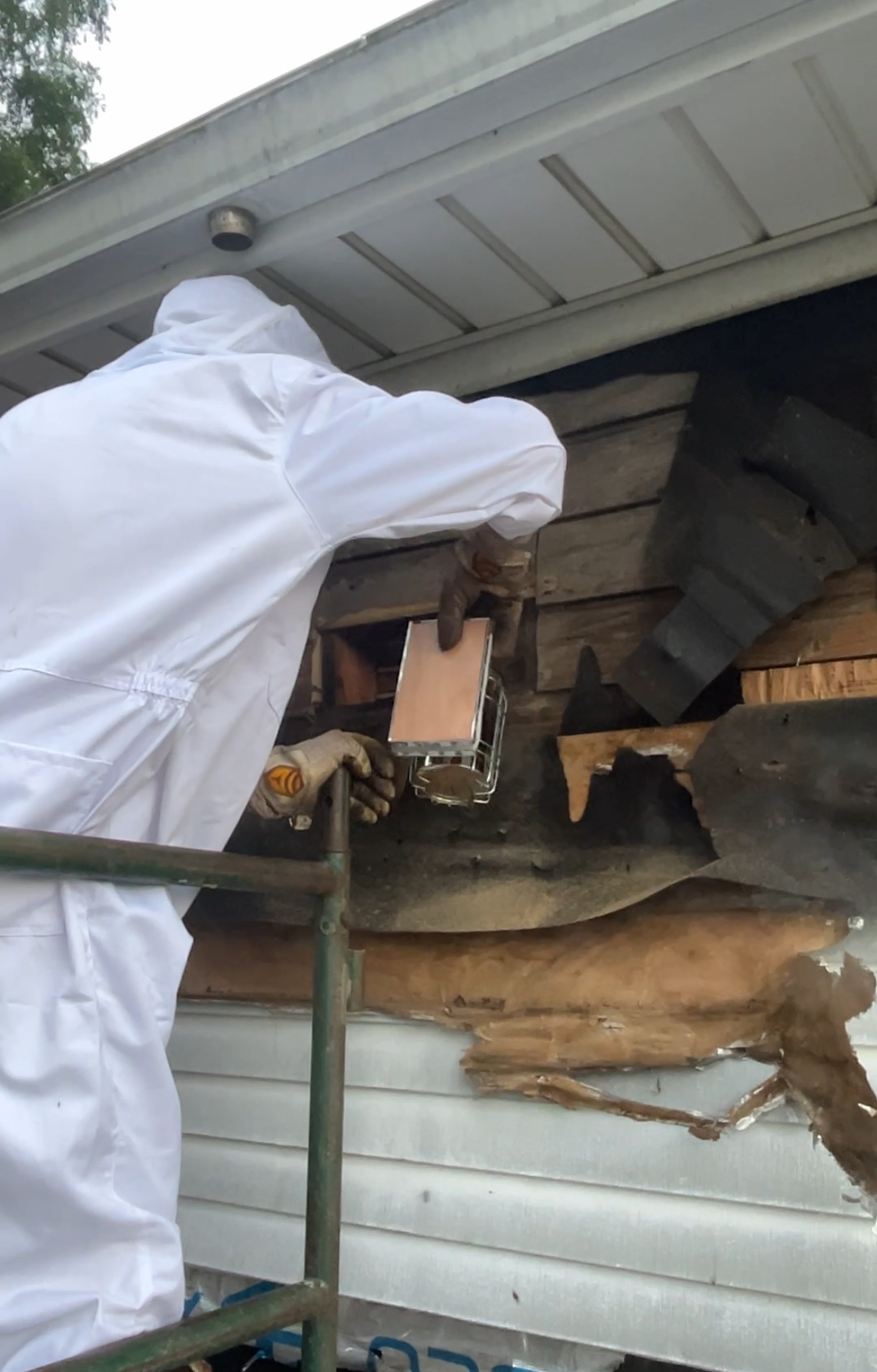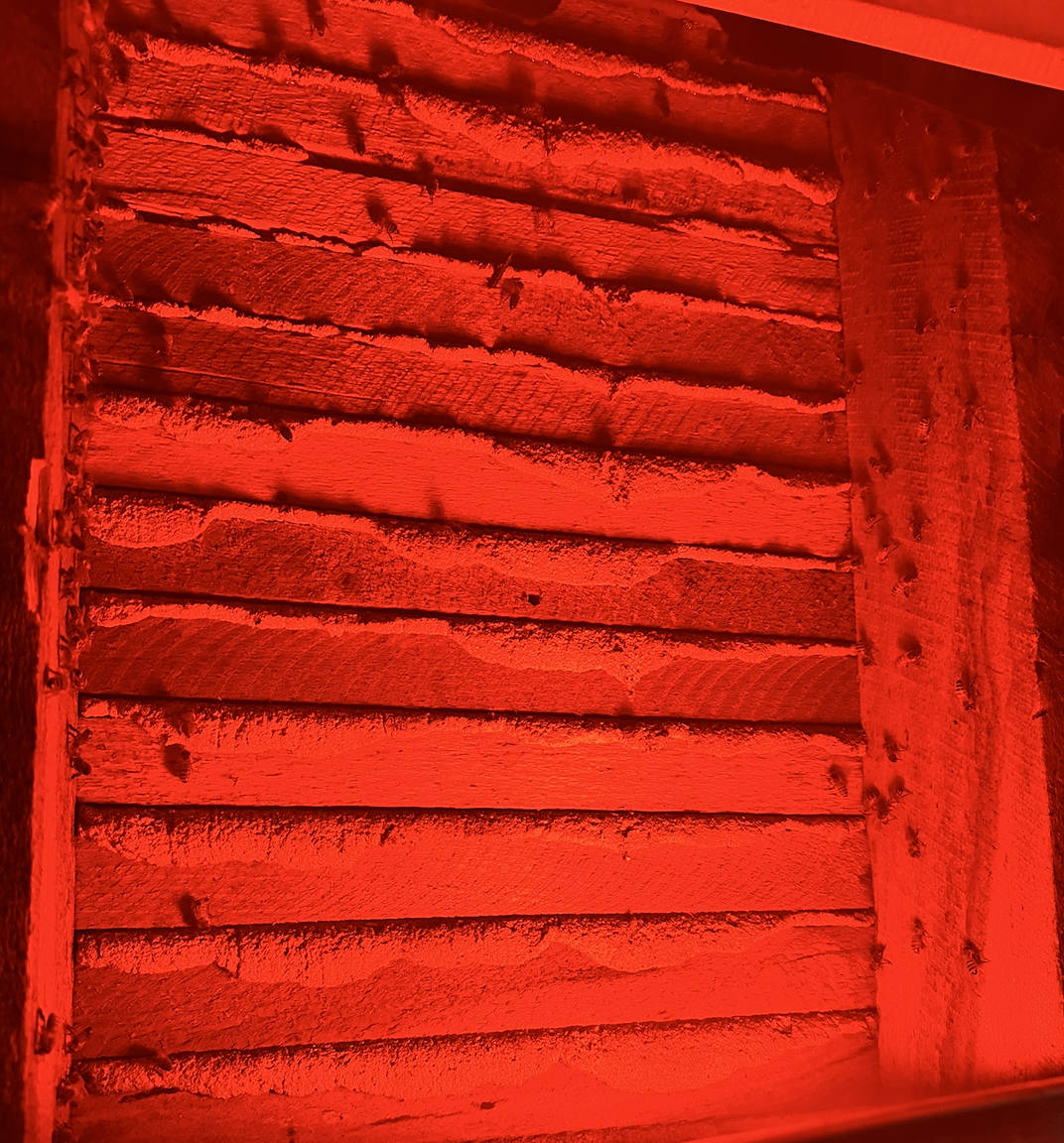Honeybee Removal From Framed Wall
July 2025 – Wayne, Ohio
Job Notes
A customer reported honeybees repeatedly entering their home. Upon inspection, I discovered the bees were accessing the interior through a gap in the vinyl and wood siding. After removing the siding, I uncovered a substantial colony with a 20-inch by 20-inch honeycomb. The comb was carefully extracted by hand, secured to frames, and transferred to a box. Despite trapping the queen, nearly half the colony remained, unwilling to abandon their residual honey. On the final visit, I spent four hours using heavy smoke and a bee-friendly vacuum to relocate the remaining bees. The colony has been fully removed, and contractors are now repairing the wall.
Inspection
During the inspection phase, The Mindful Beekeeper in protective gear uses a scaffold to access the exterior wall of the house, where the siding has been removed to reveal a beehive. The process involves carefully examining the exposed honeycomb and assessing the colony’s extent to determine the best approach for safe removal.
The Colony
The honeybee colony inside the framed wall is densely packed, with hundreds of bees actively moving across an extensive honeycomb structure. The comb, built against the wooden framing and insulation, showcases layers of hexagonal cells filled with honey and brood. The bees are clustered tightly, indicating a well-established hive, with some individuals tending to the larvae and others guarding the colony. The surrounding insulation appears to have been modified by the bees, with traces of propolis sealing gaps, highlighting their adaptability within the confined space.
Equipment Staging
Staging is crucial for maintaining organization during the bee removal process. In the image, a red wagon is set up on the lawn, holding essential tools like a smoker emitting calming smoke, protective gear, and containers for honeycomb and bees. The nearby scaffold and neatly arranged equipment demonstrate a structured approach, ensuring all materials are easily accessible while keeping the work area tidy and efficient.
Smoke For Calmness
In this step, a beekeeper in full protective gear uses a smoker on a scaffold to calm the bees within the exposed wall cavity. The smoke, directed into the hive area, helps soothe the colony, making it safer to handle and relocate the bees while minimizing disturbance.
Nighttime Extraction
I used a red light and a bee-friendly vacuum to remove the remaining bees from the wall cavity. The red light minimizes disturbance to the bees, while the vacuum gently extracts them, ensuring the final cleanup after the honeycomb has been removed. The wooden framing and insulation show the hive’s former location, now nearly cleared of the colony.


